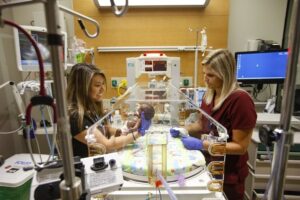Introduction: What’s Happening in Tahoe?

Imagine your peaceful camping trip by Lake Tahoe turning unexpectedly tense—because of the plague. That happened recently. A Tahoe resident tested positive for the plague, prompting urgent health advisories. This rare but serious case reminds us: even paradise outdoors can contain hidden threats.
1. The Situation at a Glance
A South Lake Tahoe resident tested positive for the plague after presumably being bitten by an infected flea while camping in the area. The individual is currently recovering at home under medical supervision.
El Dorado County health officials, alongside the California Department of Public Health, are actively investigating the case.
Plague bacteria (Yersinia pestis) circulates naturally among wild rodents in higher elevations like Lake Tahoe.
2. Historical Context & Trends
El Dorado County has been monitoring plague activity among local wildlife:

Between 2021 and 2024, 41 rodents (squirrels, chipmunks) tested positive for plague bacteria.
In 2025, four more rodents in the Tahoe Basin have also tested positive
Human cases remain extremely rare—this is the first reported in El Dorado County since 2020. The last before that were in 2015 near Yosemite.
Nationwide, the CDC reports an average of seven human plague cases per year, mostly in Western U.S.
3. Comparison: Why Tahoe Isn’t Just Another Plague Case
| Factor | Tahoe Case Highlights |
|---|---|
| Location | High-elevation Tahoe Basin—ideal environment for rodent-flea cycles (common plague zones) |
| Wildlife Surveillance | Dozens of rodents tested positive in recent years—a stark backdrop to human case |
| Rarity | Human plague is exceptionally rare—last case in Tahoe area was in 2020 |
| Treatability | Unlike historical outbreaks, modern antibiotics can effectively treat bubonic plague |
4. Expert Insights & Fresh Perspectives
Dr. Peter Chin-Hong (UCSF Infectious Disease Expert) offers clarity:
He emphasizes that awareness—not panic—is the key:
We love hiking and camping. We should know rodents can carry plague, but it’s treatable with early antibiotics.
Additional insight:
Tahoe’s beautiful wilderness also raises the public’s exposure—making vigilance vital during outdoor recreation.
Continuous wildlife monitoring strengthens our ability to respond proactively.
Pets represent another risk vector—especially cats, which are highly susceptible and may bring infected fleas indoors. (ABC7 San Francisco, El Dorado County)
5. Action Steps: How to Stay Safe Outdoors
Health officials recommend several easy, effective precautions:
Avoid contact with wild rodents—including feeding or handling them. (El Dorado County, San Francisco Chronicle, The Guardian)
Keep pets leashed and away from burrows; protect them with flea control. (El Dorado County, San Francisco Chronicle, People.com)
Use DEET insect repellent on socks and pant cuffs; wear long pants tucked into boots. (El Dorado County, San Francisco Chronicle, ABC7 San Francisco)
Heed posted warnings on trails or campsites. (El Dorado County, San Francisco Chronicle)
Report dead or sick rodents to local authorities promptly. (El Dorado County)
Watch for symptoms (within 2 weeks)—fever, nausea, swollen lymph nodes—and seek medical help early.
6. Conclusion: Awareness Saves Lives
The Tahoe plague case reminds us of nature’s hidden risks—but it also shows modern science wins with vigilance. Though rare, plague can still happen in wild areas like Tahoe.
Key takeaways:
Human cases are exceedingly uncommon and treatable.
Simple, mindful behavior outdoors reduces risk.
Awareness, not alarm, is our best defense.
Call to Action (CTA)
Have you had a close encounter with wildlife while camping? Share your story below!
Subscribe for real-time health updates or explore our guides on safe outdoor adventures.








